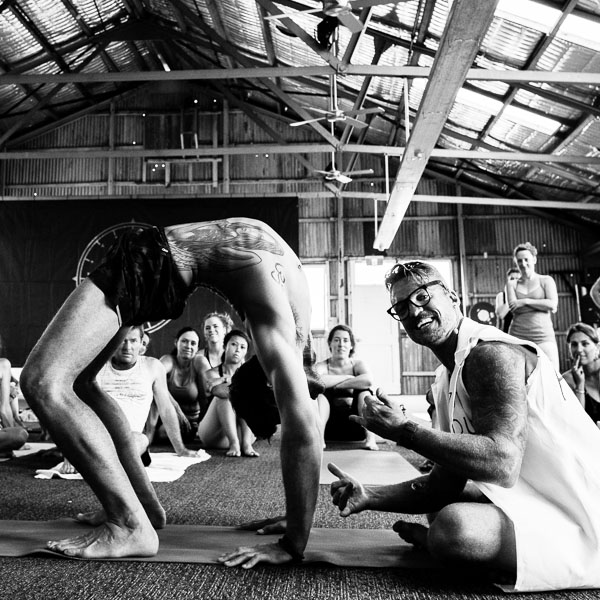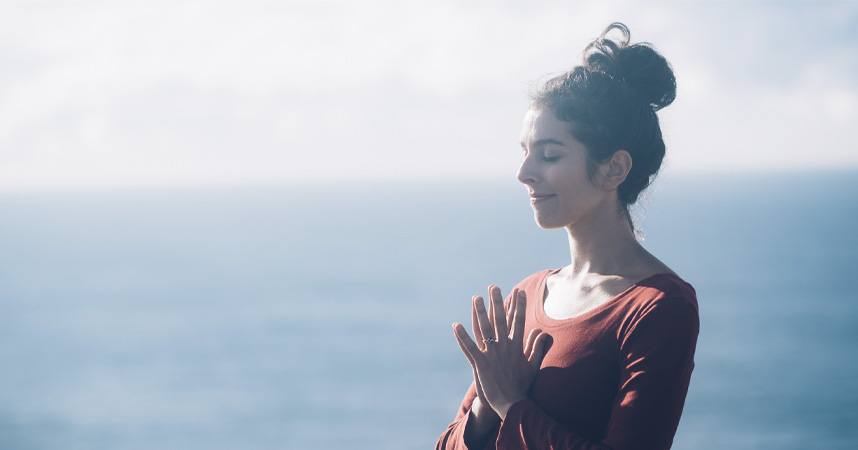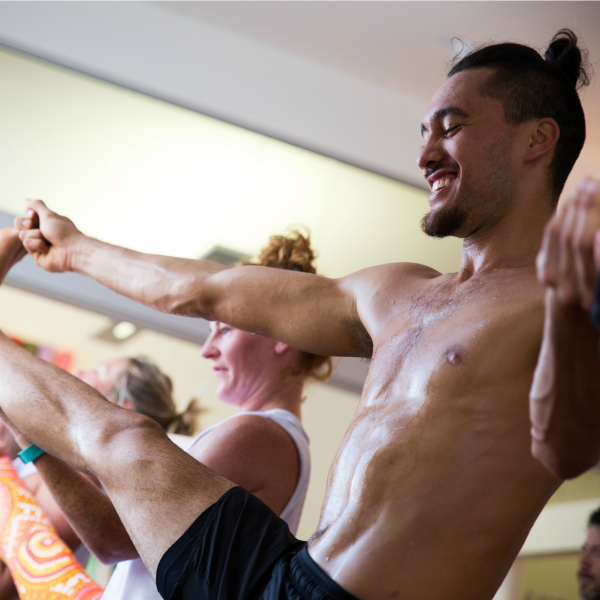04 Nov Yoga Teachers, You Need To Know Your Bones!

A big chunk of yoga teacher training is anatomy. You will study the human bones, muscles and systems – A LOT. But why, you may ask? You want to teach yoga and not open a physio practice. So why do you need to know that much about anatomy? As a yoga teacher, you need to know your structure – here’s why.
You are teaching students how to move their joints under load. You want to guide them through a safe and injury-free practice. The sequences that you teach you students can have a profound impact on their bodies. Hence, the more you know your anatomy, the clearer you can be in your instructions. Plus, the students will also learn how to engage in a safe practice.
When you, as a yoga teacher, understand how joint moves in a pose, your instructions will be much more precise. Have you ever been to a yoga class in which the teachers’ instructions were so clear and effective, leaving you with this aha-moment when you finally got it and realised how to move your body well? Yes, that is what you, as a teacher, are aiming for. You want your students to understand their bodies and create a safe lifelong practice for themselves.
We do realise that starting to study anatomy in your yoga teacher training with minimal pre-knowledge may be quite tricky. Getting your head around all the Latin names is one thing, human anatomy itself is also very complex. And no, trust us, watching Grey’s Anatomy back and forth doesn’t help significantly either. Nevertheless, our human body is fascinating and will never cease to amaze you, the deeper you peel back the layers.
Before you freak out entirely, there IS a balance to this. You don’t need to be a physio in the making to teach a yoga class; you do just need to know anatomy as it relates to asana. Below are the Anatomy non-negotiables for every yoga teacher:
1. Major movements of the body
Yoga is a practice of connecting movement to breath. “Movement” can be described in various ways. In order to understand it from an anatomical perspective, we need to know the planes of the body and how moving different body parts create actions such as flexion, extension, and internal and external rotation. The challenge isn’t in understanding these movements in theory; it’s in applying them to different body parts and poses. Often in one pose, there can be three or more actions taking place concurrently. It’s also crucial for yoga teachers not to lose your own practice; once you understand how to move your own body, you can translate your knowledge into your teachings much more quickly.
2. Major bones of the body
Did you know that the body is comprised of 206 bones? While it might seem like a commendable mission to understand and be able to name all 206, it’s only necessary for you to develop a baseline of understanding for teaching yoga. For example, knowing the bones in the arms, legs, and torso gives you an understanding of the basic structure of the body. Knowing the names of the bones will come in handy as you start to review the origin and insertion of the major muscles. Just keep in mind, Latin name dropping of all the bones might not be beneficial for your students in your class. They might have never heard of “metacarpal” bones before. If you are an anatomy geek and can’t help but using Latin names, follow it up by the corresponding English name for it so every student is on the same page and will benefit from it.
3. Major joints of the body
We all know yoga is a movement-based activity and we know the body is made up of bones and muscles – among many other parts. Joints are between bones and understanding the types of joints in each part of the body has significant implications for the kinds of movements that are safe and accessible and the kinds of movements that are riskier, mainly depending on a student’s knowledge, degree of strength and flexibility. You, as a yoga teacher, need to know how to precisely cue your students away from an unsafe alignment into a safe one. Plus it helps you guide your students how to modify each pose to being accessible for their own body to create a safe practice for them.
You need to understand that there are several types of freely moveable joints (hinge, ball and socket, gliding, ellipsoid, pivot and saddle). At a minimum, it’s helpful for you to understand each one and to identify some parts of the body where they appear.
4. Major muscles of the body
Muscle knowledge is one of the toughest topics to wean down to just what is “essential” for a yoga teacher to know. Start with body parts, like “trunk,” or “shoulder,” and “hip,” and examine the muscles in these areas. One book that does this quite well is Blandine Calais-Germain’s, Anatomy of Movement. There are also plenty of muscle apps out there that virtually walk you through the body. You can literally peel back all the layers of the different muscle groups and take a closer look, how and also what bones they move. Additionally, some have integrated quizzes, so you can test out your knowledge and go back to revise. You can incorporate your muscle (and same goes for the bones) – quizzes for your evening or morning commute.
5. The structure, composition and function of the spine
The spine is the central axis of the body and as such, understanding its composition, function and surrounding muscles can help you in the presentation of poses as well as creating custom sequencing for students experiencing back pain, injury or chronic conditions. You need to know its physical structure (bones, joints and discs) and also the muscles, tendons and ligaments. Have a read through Your Spine, Your Yoga by Bernie Clark, which is arguably the first book that looks at the spine from both the Western anatomical/biomechanical point of view and the modern yoga perspective.
6. Muscles in action in essential yoga poses
It’s not enough for you to know the names, functions and movements of bones, muscles and joints of the body. You also need to apply this information to the yoga postures. That’s when the fun begins. Start by taking five standing poses and identify the muscles in action. A good book for reference is Leslie Kaminoff and Amy Matthews’ book, Yoga Anatomy. You can also refer to Yoga Journal as your virtual Yogapedia, where you can search yoga poses by anatomy, benefit and type. Experiencing the practice in your own body is essential in understanding how it feels to move and engage your muscles. You can even try out your alignment cues on yourself.
7. Alignment that could put the body at risk
Once you have a basic understanding of the components of the body, its movements, and have reviewed key poses, you can begin to understand the kinds of movements that put the body at risk. For instance, understanding that the knee is a hinge joint helps us recognise that flexion and extension are healthier movements than taking the knee into flexion, as you would see in a pose such as Pigeon pose (where the shin is moved to the side). For example, understanding how the spine works can help you as you work with your students in forward bends.
Remember, your role as a yoga teacher is to understand anatomy in the context of yoga. All yoga teachers need to understand what is occurring within the body. What muscles move what bone and how this will affect the body. As yoga teachers, you often teach a diverse class full of students with different levels of experience. Some people are beginners attending their first yoga class ever, while some are quite experienced and quite comfortable in class. You will need to be able to teach to all levels and guide them through a safe practice. The students will learn to understand their own bodies. Additionally, they will learn how they can safely move and adjust their bodies during their practice.
Advanced Asana & Anatomy Training with Duncan Peak
Every Yoga Teacher Training includes anatomy as part of the basic 200-hour program. How this information is presented can make a huge difference in terms of your ability to absorb the information. Power Living‘s yoga teacher training facilitators are recognised as the ‘teachers of teachers’. As such, our graduates are regarded as some of the best-trained facilitators in the industry today. Here is your chance to learn from the best. Join Power Living’s Founder and Master Facilitator Duncan Peak in the upcoming Advanced Asana Anatomy teachers’ immersion in November. This training is held in Sydney but can be accessed in person or through live stream, so you can be wherever you are in the world.
This teachers’ immersion is a must for anyone who wants to support their students in modifications and variations of postures in an informed and confident way. You will learn the essential understanding of anatomy and biomechanics, specifically for a yoga asana teacher. Duncan will cover sequencing techniques, philosophy delivery in the classroom, and will train you to read bodies like an expert. Duncan’s approach to teaching anatomy is fun, interesting, challenging, hugely educational and essential for a modern-day asana teacher.
Each day will have a specific focus; breaking down the applied anatomy of the body, exploring all the major joints and dissecting biomechanical movement as it pertains to yoga asana. Duncan will teach you his technique to creatively deliver potent philosophy in your classes and share multiple methods to intelligently sequence an asana class.
Plus, you will get your anatomy geek on – as you will be going to a Cadaver Lab to observe, touch and manipulate tissues, muscles and bones for the most profound possible understanding of biomechanics. Plus much more. Sign up here or get in touch with the team to find out more details.
Written by Mind Body Green



